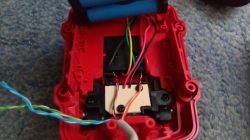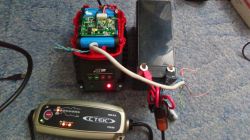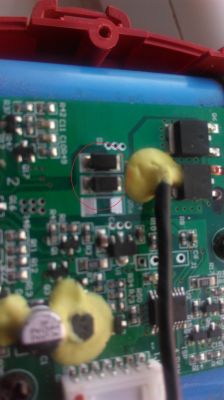I asked for the topic to be unlocked to add photos if anyone needed.
The puzzling thing about this Parkside set is that since the screwdriver has a protection and turns off when the battery voltage is low, it does it at the wrong time, since the charger is unable to see the battery. Basically, the problem here is the charger, which, for senseless reasons, does not see it at all at low battery voltage.
I couldn't save my colleague's method above, i.e. I plugged the external battery into the circuit, and exactly put the wires inside the battery plug. Since the charger was supposed to detect the voltage, it supposedly should start, especially since my external battery was a 16340 and had a voltage of 4.1V, which is much more than 1.5V with AA. But after connecting the charger turned off the red diode, something was ticking and then the red one turned on again.
I managed a different way. For this purpose, you need either an ordinary car rectifier that will be able to provide a stronger current, or a modern car charger + some gel battery to start it at all, because it does not provide any voltage by itself. Fortunately, I had a charger + some old gel battery with a voltage of 1V ... So I connected the gel to the car charger and connected the wires from the charger's battery plug. The charging voltage fluctuated between 10-11V. At the beginning, after a while, the green diode turned on and after disconnecting it did not want to go out ... On the second attempt, I combined with shorter times of connecting the wires to the gel charger and it worked, the charger surprised and the green diode began to flash, i.e. the battery charging began.
Pictures below.
Information yet. The cells are hopeless, unbranded, capacity 1300 ... So if someone wants to play with detaching the plates and re-soldering the cells, you can buy 5 pcs for PLN 20 for PLN 100, the best cells on the market with a capacity of 3500mAh. In this way, we would have a battery 3 times as good as the original.












